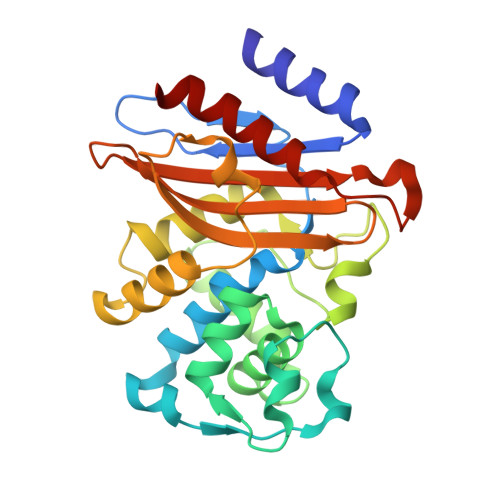A glycine at position 105 leads to clavulanic acid and avibactam resistance in class A beta-lactamases.
Radojkovic, M., Chikunova, A., Koene, S.F., Timmer, M., Natarajan, S.V., Boyle, A.L., Ubbink, M.(2025) J Biological Chem 301: 110347-110347
- PubMed: 40484381
- DOI: https://doi.org/10.1016/j.jbc.2025.110347
- Primary Citation of Related Structures:
9QI5, 9QI6, 9QI7 - PubMed Abstract:
β-Lactamase enzymes exhibit extraordinary adaptive potential, thus rendering many β-lactam drugs ineffective. The residue at Ambler position 105, also known as the gatekeeper residue, plays an important role in substrate recognition, but its implication in inhibition mechanisms is understudied and obscure. To inspect the relationship between inhibitor-resistant phenotypes and residues at this position, we performed site-saturation mutagenesis and extensive fitness profiling of five distinct class A β-lactamases using deep sequencing. We found that inhibitor resistance is readily detectable, with variants harboring Gly or Arg being the least susceptible to inhibitors. Mutation of Ile105 to Arg in the β-lactamase BlaC simultaneously enhances activity for carbenicillin and the ability to evade clavulanic acid inhibition. The Y105G substitution in two clinically important enzymes, CTX-M-14 and TEM-1, confers greatly reduced in vitro sensitivity to avibactam, which we attribute to elevated conformational flexibility of the inhibitor within the active site. The findings presented in this study underpin the gatekeeper residue as a possible mutational hotspot and might aid the design of novel β-lactamase inhibitors.
- Leiden Institute of Chemistry, Leiden University, Einsteinweg 55, 2333 CC Leiden, The Netherlands.
Organizational Affiliation:


















